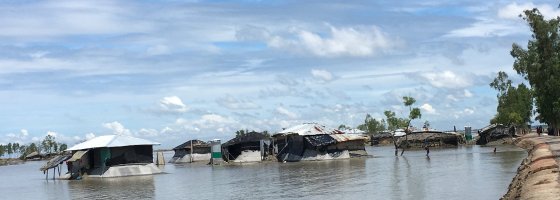Blog post
Symposium: Migration, mobilities and environmental change

Held at Wageningen University, The Netherlands on June 6 & 7, 2019
Abstract of the Symposium
The relation between environmental change and human migration has often been discussed through two dominant discursive lenses: the one conceptualising climate migrants as a danger to be prevented, and the other conceptualising it as an adaptation strategy through which migrants can (and should) enhance their resilience to environmental changes. Both perspectives have received critique: the former for raising unfounded alarmism based on questionable projections, and the latter for romanticizing the detrimental effects of climate change and placing the responsibility for adaptation with the individual migrant.
In this symposium, we want to explore an alternative lens and way forward by introducing the mobilities perspective to the field of climate change- and environmentally-induced human mobility, originating from the disciplines of sociology and human geography (see in particular the work of Sheller and Urry). As opposed to just assuming what migration is or what the implications of moving will be, it centres on understanding the movement itself: How do they move, where do they go, who stays behind, and how does this affect them? What role does the environment play in the different phases of migration trajectories? As such, it draws attention to the complexity of migration trajectories, the relationship between mobility and immobility as well as the role of unequal power relations as important issues for better conceptualizing the climate change-migration nexus. This contributes to a more grounded and dynamic understanding of the subject able to better capture its diverse character.
Adding to that, a mobilities lens enables an analysis of how human movements (e.g. migration or immobilities) intersect with other with mobile dynamics, such as information, social networks, transport systems, or with the dynamism of environmental events themselves. As such, adopting a mobilities lens can help to move the field of environmental migration beyond static perceptions of the phenomenon, centring on how human mobility or immobility is a product of an active intersection of social, informational and environmental processes.
Next to exploring a mobilities perspective together with scholars from the field of the environmental change-human mobility nexus, the symposium aims to connect with scholars working on other types of migration and on mobilities more generally.
Conference video
- Unfortunately, your cookie settings do not allow videos to be displayed. - check your settings